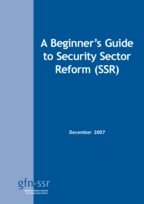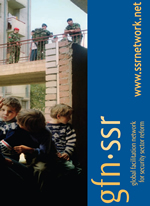Summary
How is reconciliation understood? What is its role in peacebuilding? This chapter from the SAGE Handbook of Conflict Resolution surveys the study of reconciliation and analyses the Franco-German and South African cases. While not universally applicable models, these two examples hold lessons for both the scope and limitations of reconciliation. Reconciliation has too many ambiguities and shortcomings to serve as the key concept in peacemaking and stabilisation.
Reconciliation is most usefully seen as a process rather than a goal. The reconciliation process is not linear, but a continuously evolving relationship between parties; at each stage a relapse into violence is possible. Nor is there consensus about a precise definition of political reconciliation. The elements stressed in reconciliation literature (such as joint projects, cultural exchanges, apology, justice, reparation; structural or relational approaches) are not always found occurring in any set order.
Analysing the Franco-German and the South African reconciliations, it is apparent that motives can be both pragmatic and moral. However, the almost universal condemnation of Nazi and apartheid regimes dispenses with a major obstacle to many reconciliations – identifying perpetrator and victim.
What are the parameters for an internal or international reconciliation?
- Reassessment of the self, the other, and history. Pursuing common goals, parties must be willing to reject dehumanised images of the enemy, and accept responsibility for their own attitudes. Re-evaluating national myths and a frank confrontation of events can be aided by symbolic gestures or visits by an authority figure.
- Either leaders or grass roots individuals/groups may initiate the process, and both are required to maintain momentum. Advocation for reconciliation by ‘heroic’ leaders (such as Nelson Mandela) is particularly effective. Third parties and NGOs are also crucial.
- Reconciliation may span (at least) two stages: a peaceful coexistence, potentially followed by a transformation of beliefs and identities. The shorter the time between conflict and reconciliation, the sharper the resistance within the population.
Reconciliation always provokes a tension between the legitimate need to look forward, and the risk of denying the people damaged by the past. How do truth, justice and forgiveness factor in successful reconciliations?
- The practical requirements of administering retributive justice on a grand scale render it impossible. Alternatively, a forward-looking, restorative justice appeases bitterness and seeks to build peaceful coexistence, but those hoping for punishment or reparation may be disappointed.
- The helpfulness of truth commissions is questionable, and may not be essential to reconciliation; ‘truth-telling’ may in fact impede rapprochement and forgiveness. However, the clarification of historical fact is a decisive step towards changing relationships and may provide a framework to build on in future.
- Who may legitimately ask for or grant forgiveness? The increasing number of official acts of repentance may point to reconciliation as a political slogan; forgiveness is not asked of nor granted by the victims, but the government. This may be interpreted as manipulation and provoke further hostility from victims.
- The essence of reconciliation is the voluntary initiative of the parties. Third-party mediation should be conducted with great sensitivity, and may be counterproductive.
- General principles of reconciliation should not be formulated without regard for the context of each case.
- Further research is required to examine cases where no formal reconciliation has been carried out, and on the potentially negative effects of reconciliation processes. With its current ambiguities and shortcomings, as Hermann asserts, reconciliation cannot serve as the key concept in peacemaking and stabilisation.
Source
Rosoux, V., 2009, ‘Reconciliation as a Peace-Building Process: Scope and Limits’, in The SAGE Handbook of Conflict Resolution, eds., J. Bercovitch, V. Kremenyuk, and I. W. Zartman, SAGE, London, pp. 543-560









